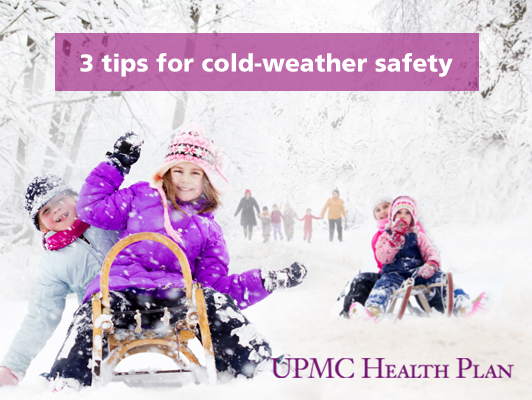3 tips for cold weather safety
Now that the holidays are over and winter has set in, you may have children home from school. Winter is a time for sled riding, snowball fights, snow angels, and a host of other winter sports and activities. Follow these cold weather safety keep yourself and your family members safe this winter while you enjoy the season:
Layer up

Source: giphy.com
Generally speaking, layers are broken down into three categories: moisture-wicking, insulation, and a shell. The first layer, closest to your skin, should be thin and keep you dry. A synthetic material such as nylon or polyester is best because it will help you stay warm without causing you to overheat, as well as being flexible enough to move with you. The next layer should be something insulating, such as fleece or wool. Fleece offers the same warmth as wool, but is typically more breathable and flexible. Down or cotton may also be used, but they do not dry as fast if they become damp. The third and outermost layer should be resistant to wind and water, but breathable. Gore-Tex® is a good example of a water-proof shell that is breathable to let go of some heat, but it is not typically wind-proof. Other synthetic blends are available that offer that extra protection from the wind, especially if you will be hitting the slopes on skis, snowboarding, or snow tubing. Also be sure to look for a synthetic or wool blend for hats, socks, and gloves or mittens. Layer up on your hands and feet as well, using the same rules. A scarf or balaclava provides extra protection for your neck and face.
Know the signs of cold stress

Source: giphy.com
Whether you’re at a ski resort or just building a snowman in your backyard, stay alert for vital cues that it’s time to head indoors. A common cold stress is frostbite. Frostbite often affects the nose, ears, face, fingers, or toes. If not recognized early, frostbite can lead to permanent damage and even amputation. Symptoms include reduced blood flow, numbness or tingling, aching, and waxy or bluish pale skin. To treat possible frostbite, bring the affected person indoors and warm the area slowly with warmish water or body heat. Be careful not to use hot water, heating pads, or rub the affected area as these can cause more damage.
A less severe form of frostbite is chilblains. This is caused by repeated exposure the cold and leads to damage to the capillary beds. Symptoms include redness, itching, and possibly blistering or ulceration in severe cases. To treat chilblains, slowly warm the skin and avoid scratching. You may need a corticosteroid cream to relieve itching.
Hypothermia is another cold stress, which can be fatal if left untreated. It is typically the result of prolonged exposure to cold weather that reduces a person’s core body temperature. Symptoms include shivering, exhaustion, confusion, slurred speech, and drowsiness. Young children may also have bright red, cold skin and appear lethargic. To treat hypothermia, bring the person indoors or into a warm shelter and remove any damp clothing. Try to increase core body temperature by using dry layers of blankets, towels or an electric blanket if able, and even warm beverages. Be sure not to serve the person alcohol and do not give beverages to someone who is unconscious. If you suspect someone is suffering from cold stress, get medical attention right away.
Stay hydrated!

Source: giphy.com
Limit alcohol consumption in the cold because it can lead to dehydration and hypothermia. Cold air has a drying effect, and you even lose moisture through your breath. If you’re going to be outside for an extended period of time, especially when you’re highly active, be sure to drink plenty of water or a sports drink before, during, and after activity.




